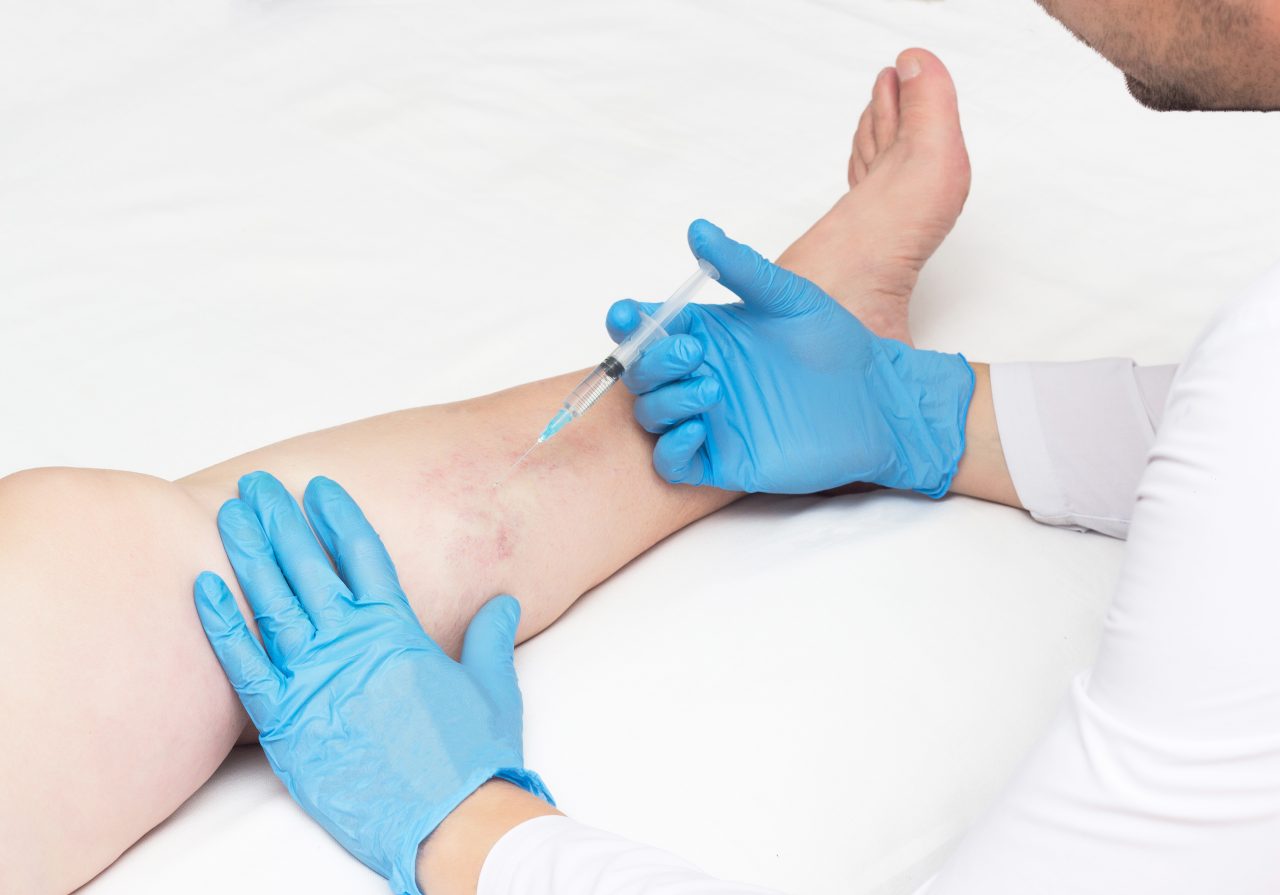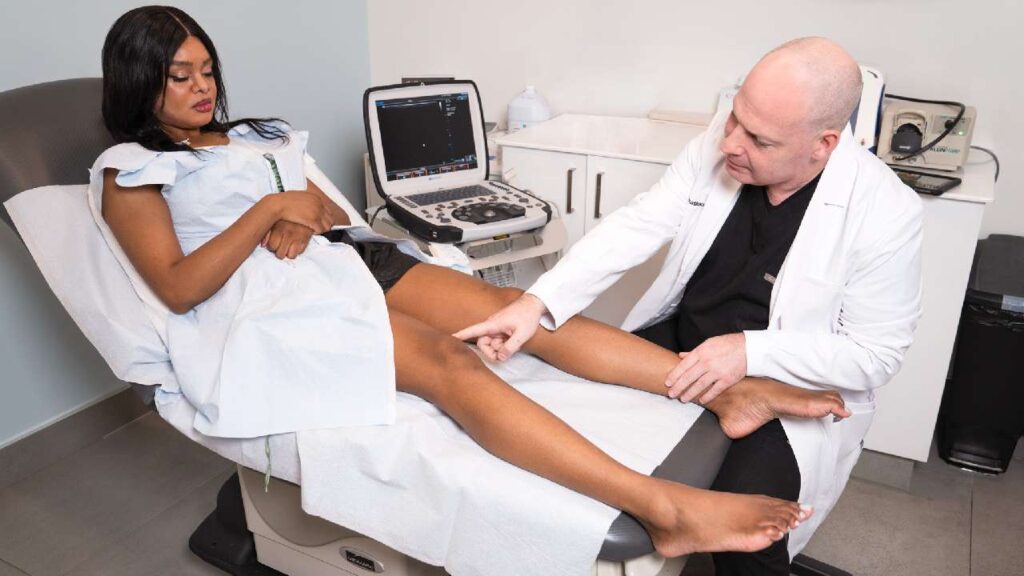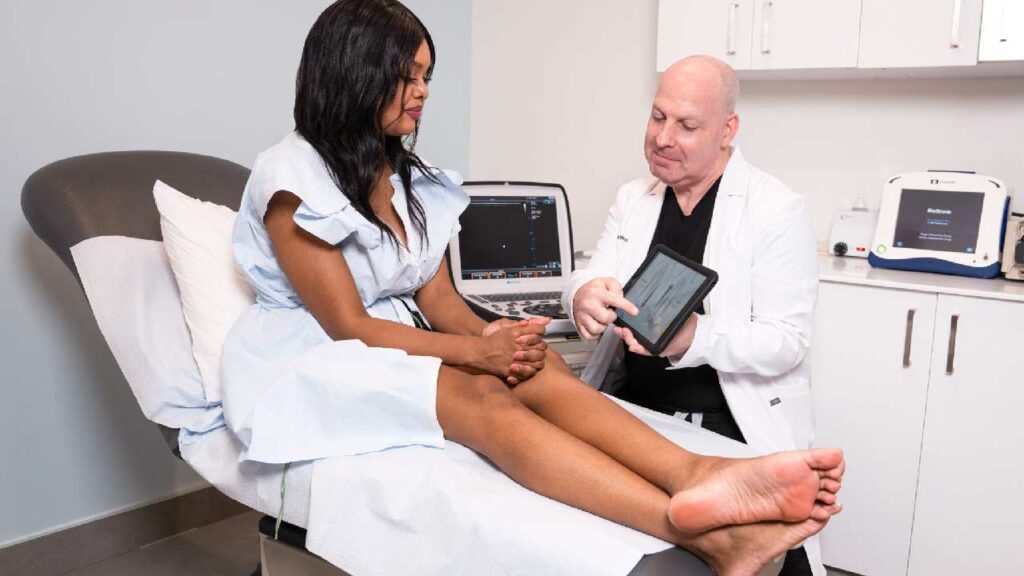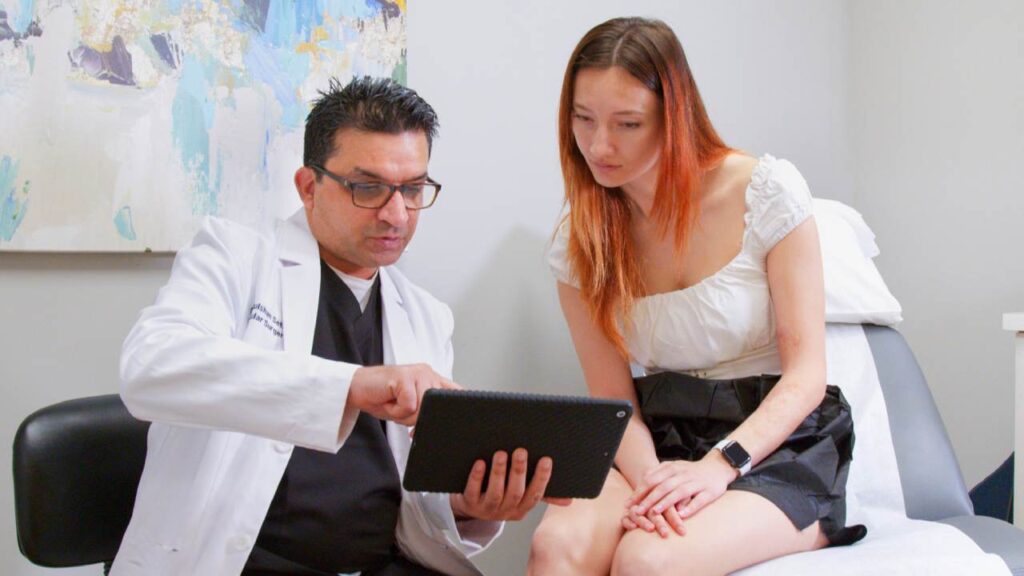What Causes Lumpy Leg Veins and Bumps in Arm Veins?
If you have a vein that’s larger, more protrusive, and more lumpy or bumpy looking than other veins, it might be a varicose vein. These veins are common in adults, especially women, and especially as we age. There are several things that contribute to the development of varicose veins. Book an appointment with Harvard-trained vein doctors in NY to learn why your varicose veins developed. Read on to learn the common causes and what you can do about them.
The underlying cause of most varicose veins is pressure in or around the vein. Typically, the pressure comes from within the vein. Leg veins are lined with little valves that close once blood flows through. This closure keeps blood moving toward the heart, rather than traveling in reverse. When a valve fails, blood flows backward through the vein. It collects beneath the broken valve, elevating pressure inside the vein. This causes the vein to swell and contort, creating a varicose vein.
That pressure can also cause new veins to branch out from the enlarged veins, and these are called spider veins. They’re smaller and less protuberant, but they’re also unhealthy, and often uncomfortable, veins. Anyone can acquire vein damage. Learn which factors create a higher risk of developing varicose veins and spider veins.

Risk Factors for Varicose Veins Plus Spider Veins
How do you get varicose veins in the legs? The factors below contribute to varicose veins plus spider veins and Chronic Venous Insufficiency. See a vein doctor to learn how to reduce your risk and prevent new varicose veins from forming.
- Family History: This is the top predictor of unhealthy veins. If both of your parents have spider or varicose veins, there’s a greater than 95% chance you’ll develop them.
- Gender: Spider veins and varicose veins occur more often in women.
- Hormone Shifts: Pregnancy, birth control usage, and menopause contribute to varicose veins and spider veins.
- Aging: Over time, vein valves become weaker and more prone to venous reflux.
- Obesity: Extra weight puts more pressure on blood vessels in the legs and pelvis, increasing the prevalence of vein damage.
- Inactivity: Being inactive reduces the number of muscle contractions in your legs. These contractions help pump blood out of your veins, so exercise is important.
- Sedentary Jobs: Sitting or standing for long periods at work allows blood to pool in your veins, if you have weakened valves. Scientists call sitting “the new smoking,” in terms of vascular health.
What Causes Spider Veins and Broken Capillaries in Feet?
Spider veins and broken capillaries in feet are also commonly caused by Chronic Venous Insufficiency. Blood must travel through veins from the feet to the heart. This transit is complicated by the gravitational pull and the pressure of body weight on the veins. So, veins in the lower extremities are more prone to backward blood flow, which generates spider veins.
Capillaries are the blood vessels that move blood from the arteries to the veins. They too can be impacted by weakened valves and the overaccumulation of blood in a vein. However, broken capillaries and spider veins in areas with thinner skin, like the face, can also stem from pressure around the vein, rather than inside it. For instance, squeezing a pimple, straining in labor, and the pressure from UV rays can all cause spider veins and broken capillaries near the surface.
Are Green Veins Good or Bad and How Can You Tell?
Some veins seem unhealthy, due to their color. But healthy veins can appear green, blue, or purple, depending on certain factors. Varicose veins in African American, Asian, Caucasian, and Hispanic skin can all appear in a wide range of colors. What determines the color is the skin’s undertones, and the depth of the vein.
What we perceive as color is actually the frequency of visible light. Blue has a shorter wavelength than red, so it cannot penetrate deep tissues. That’s why when we look at surface veins, blue light is reflected back to our eye (making red blood appear blue). To find out whether your purple, blue, or green veins are good or bad, you need to see a vein doctor. They can use ultrasound imaging to see beneath the skin and assess the health of your veins.
Which Specialist Treats Varicose Veins in New York City?
Varicose veins are often caused by problems in deep veins. Treating the surface damage neglects the cause, which is usually a broken valve deeper in the blood vessels. Choose a vein doctor for varicose veins, since surface treatments can’t eliminate most varicose veins and won’t eliminate the cause. Dermatological and cosmetic vein clinics only treat the surface veins. If you ignore the cause, more varicose veins and spider veins are likely to form. So, choose a board certified vein doctor to treat varicose veins.
Do Varicose Veins on Black Skin Need Specific Treatments?
If you’ve heard stories of vein treatments fading Black skin, you should know that this rare occurrence is linked to certain surface lasers when they aren’t used correctly. That’s why it’s important to choose a vein clinic, not a cosmetic clinic. Used incorrectly, surface lasers can also discolor lighter skin tones, so always seek an accredited vein treatment clinic.
Varicose veins are typically treated with endovenous procedures, not surface lasers. And qualified vein doctors have a wealth of varicose vein treatments to choose from. Your vein specialist can treat varicose veins with sclerotherapy, vein adhesives, radiofrequency, or rotating catheters, none of which are applied to the skin, and none of which involve lasers. While surface lasers are safe with trained vein doctors, they’re rarely used on varicose veins.
Where Can I Get My Varicose Veins Removed in NYC?
In New York City, choose an accredited vein clinic run by board certified vein doctors. Most varicose veins do not need surgery, so look for a minimally invasive vein specialist who’s trained in vein medicine. Or choose a vascular surgeon who specializes in and prefers minimally invasive vein treatment. Vascular surgeons are required for some veins with blood clots or severe tortuosity. But vascular surgeons treat other blood vessels like arteries and other cardiovascular diseases too. Surgery is not a first line of treatment for varicose veins.
What’s the Top Varicose Veins Treatment Clinic Near Me in NY?
The top varicose veins treatment clinic has two locations in NYC. Visit our Midtown vein clinic at 290 Madison Avenue. Or Visit our Financial District vein clinic at 156 William Street. Both clinics are run by Ivy-League-trained vein doctors with a wide array of cutting-edge vein treatments. We also have four vein clinics on Long Island.
How Fast Do Veins Vanish in Vein Clinic Procedures?
You can wear compression stockings or elevate your legs while resting to reduce varicose vein symptoms. But only vein treatment can make veins vanish. Rather than lifelong symptom management, book a minimally invasive vein treatment. Appointments take 15-30 minutes, and vein doctors close the vein instantly, leaving you with beautiful skin and symptom-free veins.





